We have prepared a comparison of children's year-long barefoot shoes. Here you will find detailed information about toe shape, flexibility, proportions in the instep, ankle and heel area, as well as photos of all models on the same foot.
We recommend that you measure your foot to make the right choice, the oversize of full shoes is usually 9-12 mm. A filter by internal length and width, as well as other parameters such as the sole, material or fastening method, will make it easier to find the ideal shoes for spring.
Comparison of basic parameters of year-long shoes
We summarized the properties of each model in a summary table. The information is to a certain extent subjective, because the flexibility or strength of the heel counter cannot be easily measured, but we try to compare everything and provide as objective information as possible to facilitate the purchase.
|
|
BRAND |
TOE BOX SHAPE |
HEEL/ANKLE |
INSTEP |
FLEXIBILITY |
HEEL COUNTER |
WEIGHT |
|
WIDE |
slightly curls in at the big toe/descending toes |
average/average |
average |
well flexible |
with reinf. heel counter |
166 g |
|
|
slightly curls in at the big toe/descending toes |
average/narrow |
average/high |
well flexible |
slightly reinforced |
154 g |
||
|
dominant big toe/straight toes |
average/average |
average |
well flexible |
slightly reinforced |
144 g |
||
|
dominant big toe/straight toes |
average/average |
average |
well flexible |
slightly reinforced |
116 g |
||
|
dominant big toe/straight toes |
average/narrow |
average |
extra flexible |
slightly reinforced |
148 g |
||
|
dominant big toe/straight toes |
narrow/narrow |
average |
well flexible |
without reinf. heel counter |
138 g |
||
|
AVERAGE |
dominant big toe/descending toes |
narrow/narrow |
low/average |
well flexible |
with reinf. heel counter |
146 g |
|
|
dominant big toe/descending toes |
average/narrow |
average/low |
well flexible |
slightly reinforced |
172 g |
||
|
slightly curls in at the big toe/straight toes |
wide/wide |
high |
well flexible |
with reinf. heel counter |
171 g |
||
|
slightly curls in at the big toe/straight toes |
average/average |
average |
well flexible |
with reinf. heel counter |
126 g |
||
|
slightly curls in at the big toe/straight toes |
wide/average |
average/high |
well flexible |
slightly reinforced |
155 g |
||
|
slightly curls in at the big toe/ descending toes |
average/average |
average/high |
extra flexible |
without reinf. heel counter |
140 g |
||
|
NARROW |
dominant big toe/straight toes |
narrow/average |
average |
extra flexible |
without reinf. heel counter |
130 g |
|
|
dominant big toe/descending toes |
narrow/average |
average/low |
well flexible |
slightly reinforced |
180 g |
Sole shapes
The sole should follow the shape of the foot as closely as possible. It should not cramp the foot at any point, but extra space is not desirable either. Look at the shapes of the soles, the shape in the toe area, the amount of bevel towards the little toe and the width of the heel.
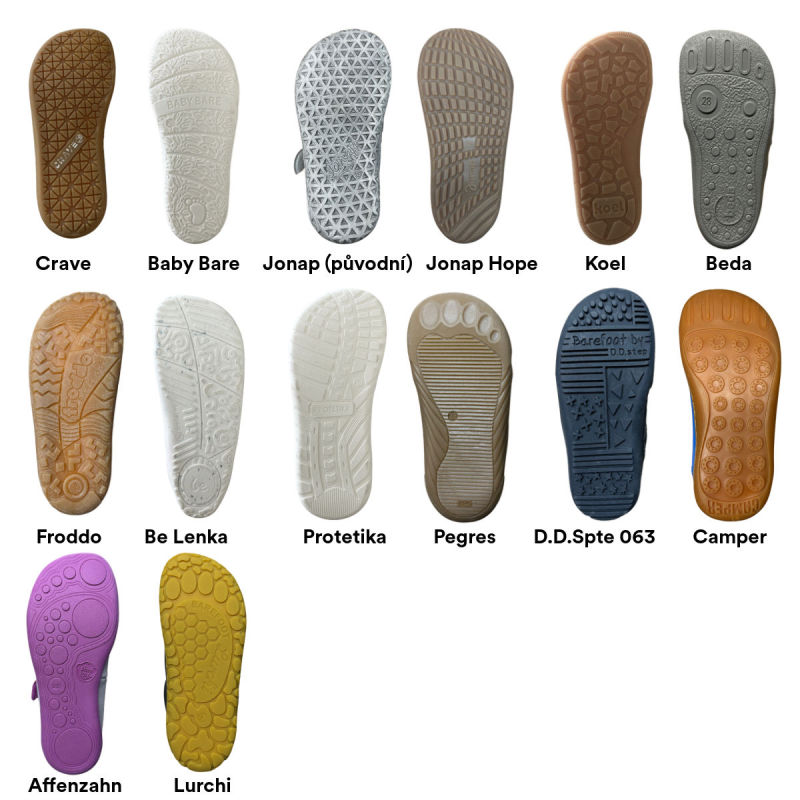
For comparison, we put the size 28 shoes on an average 173 x 69 mm foot with a slightly higher instep. A different size would be appropriate for some brands, the size 28 was chosen as a compromise to make the comparison more uniform.
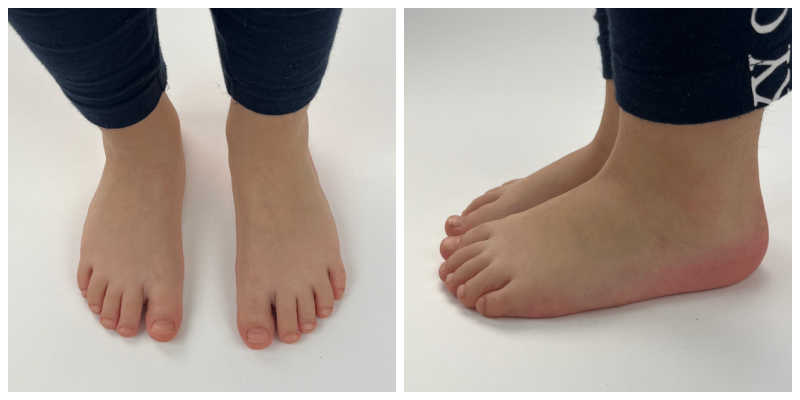
Froddo
- anatomically shaped toe, plenty room for a dominant big toe
- suitable for the average foot or fin shaped foot
- narrower in the heel and especially in the ankles, they can be well tightened on narrow ankles
- suitable for lower legs, but chubby feet do not put on the shoes
- flexible sole with more significant pattern (some older models have a slightly less flexible sole without a pattern)
- sole approx. 4 mm + 3 mm pattern and it is stitched around the perimeter
- zero drop
- medium firm in the heel, multiple layers of material
- removable insole
- inside leather
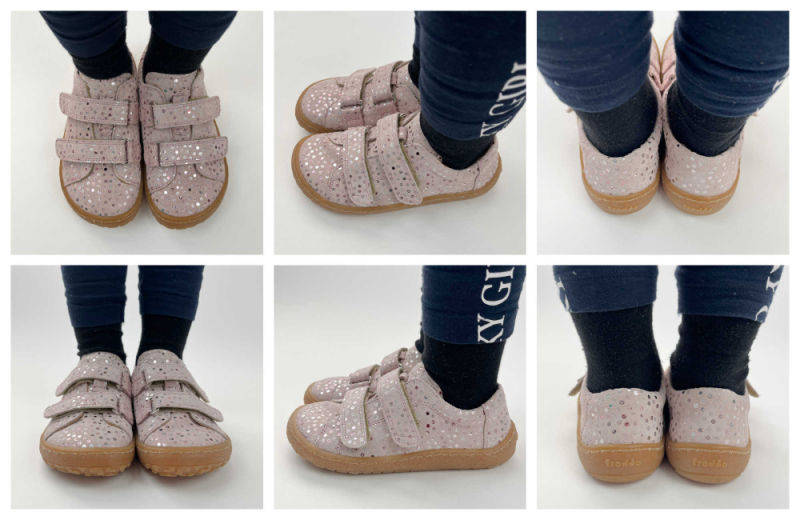
Protetika
- anatomically shaped toe, but on the toe side they curl a little, not ideal for a strongly dominant big toe
- suitable for the average foot and the foot wider at the heel and ankles
- higher in the instep, recommended for overall chubbier feet
- flexible sole with a fine pattern (the shoe is glued, not stitched)
- sole approx. 3 mm + 1 mm pattern and stitched around the perimeter
- zero drop
- medium firmness in the heel, multiple layers of material
- removable insole
- inside synthetic fabric
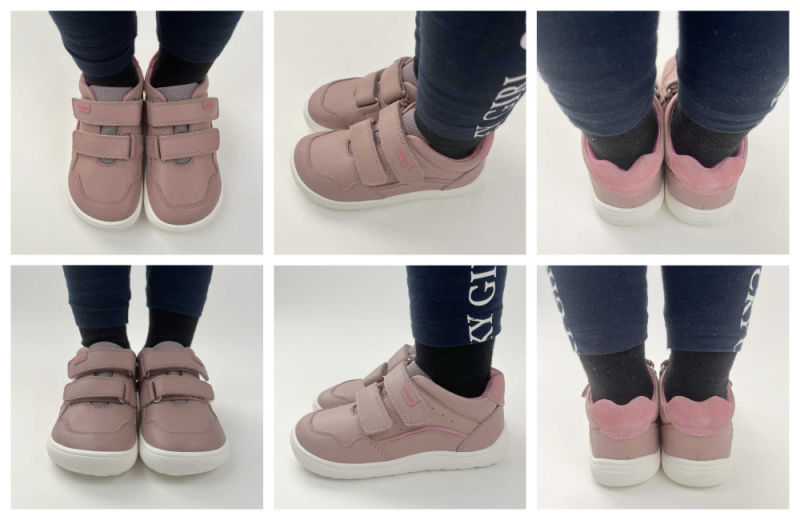
BEDA
- anatomically shaped toe, plenty room for a dominant big toe
- suitable for the average foot and wider in the toes, or fin shaped foot
- average in the heel, but can be tightened around the ankles
- suitable for average insteps, they are not for chubby feet in comparison to ankle models (they are lower in the instep and narrower in the ankles)
- flexible sole with a fine pattern
- sole approx. 3 mm + 1 mm pattern, glued around the perimeter
- zero drop
- the variant without counter is only slightly reinforced in the heel with more layers of material, models with the heel counter are stronger
- removable insole
- inside fabric
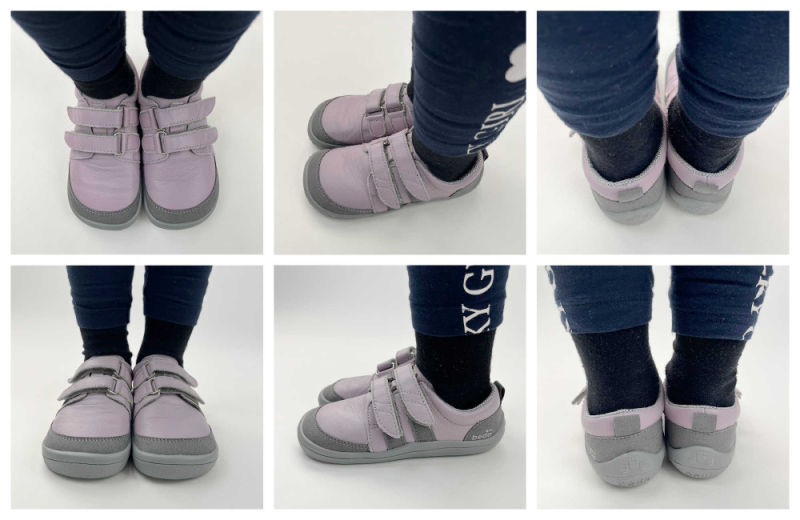
Jonap B11
- anatomically shaped toe, a little curl on the toe side, not ideal for a strongly dominant big toe
- suitable for the wider foot at the toes or the fin shaped foot
- average in the heel, but they can be tightened well around the ankles, however, we do not recommend them for significantly narrow ankles
- suitable for average and lower instep
- the slim version is slightly narrower but higher at the instep
- flexible sole with a fine pattern
- sole approx. 3 mm + 1 mm pattern, glued around the perimeter
- zero drop
- softer heel counter
- removable insole
- textile inside
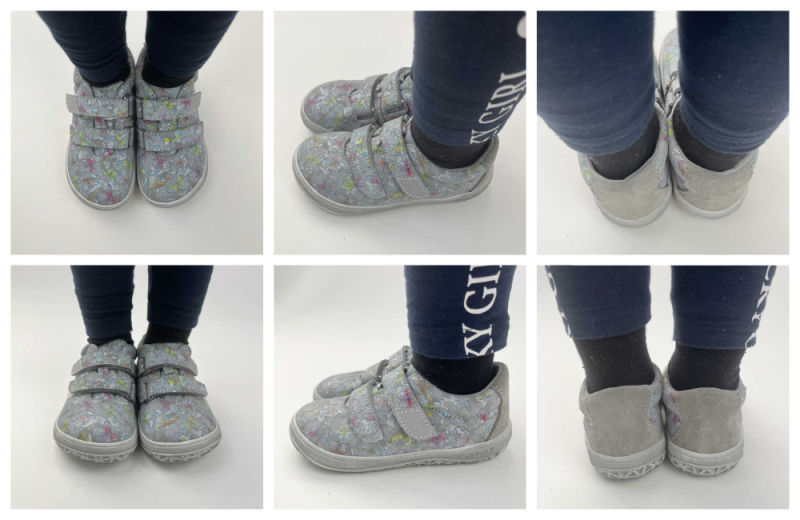
Jonap Hope
- anatomically shaped toe, a little curl on the toe side, not ideal for a strongly dominant big toe
- suitable for wider feet at the toes and narrower at the ankles
- average in the heel, but can be tightened well around the ankles
- suitable for average and higher instep
- flexible sole with a more significant pattern
- sole approx. 3 mm + 2 mm pattern, glued around the perimeter
- zero drop
- softer heel counter (B11s are firmer in this area)
- removable insole
- inside fabric
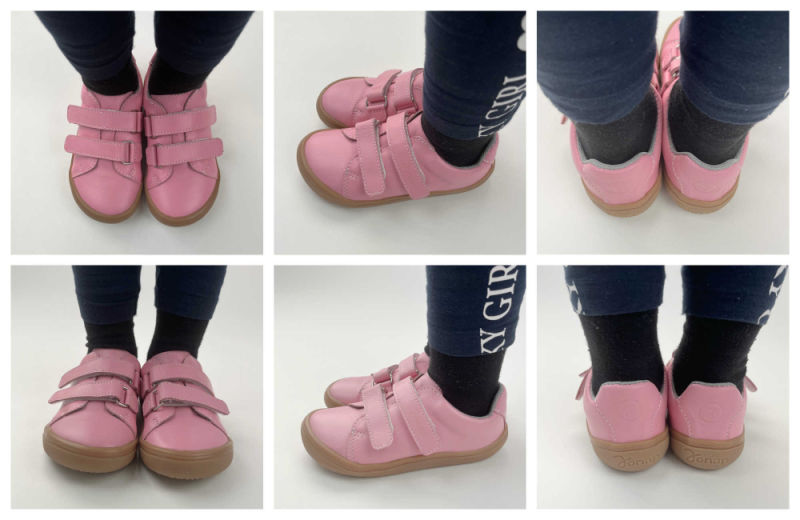
Koel
- anatomically shaped toe, ideal for dominant big toe
- suitable for wider feet at the toes and narrower at the heel, so it is good for fin shaped foot
- average in the heel, it can be tightened well around the ankles, but it is not recommended for significantly narrow ankles
- suitable for the average instep
- the sole is extra soft with a fine pattern, one of the most flexible shoes
- sole approx. 3 mm + 1 mm pattern, stitched around the perimeter
- the toe rubber is overstretched and protects the shoe
- zero drop
- slightly stronger in the heel thanks to multiple layers of material
- removable insole
- inside leather
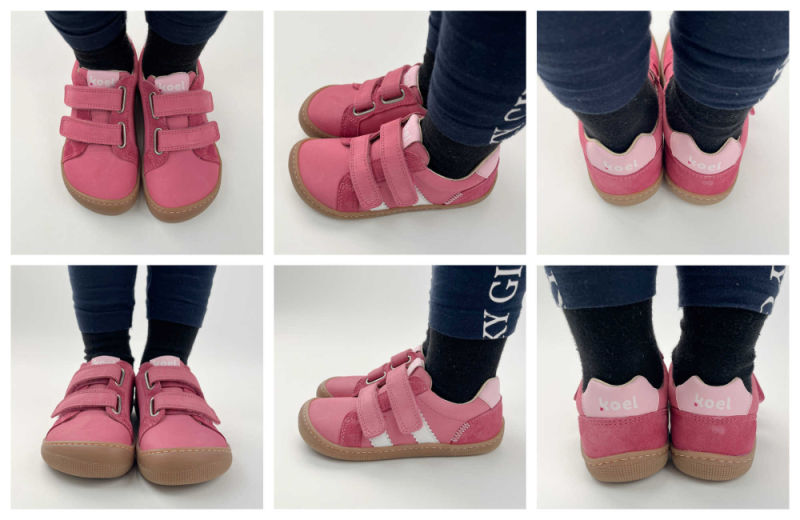
Baby Bare
- anatomically shaped toe, ideal for dominant toe
- suitable for the fin shaped foot, they are generous in the toe area and narrow significantly towards the heel
- they can be tightened well around the ankles, but the Velcro fasteners are quite long
- suitable for the average instep
- flexible sole with a fine pattern
- sole approx. 3 mm + 1 mm pattern, glued around the perimeter
- asfaltico material in the toe (not on all models) to protect the toe
- zero drop
- soft in the heel
- removable insole
- inside leather
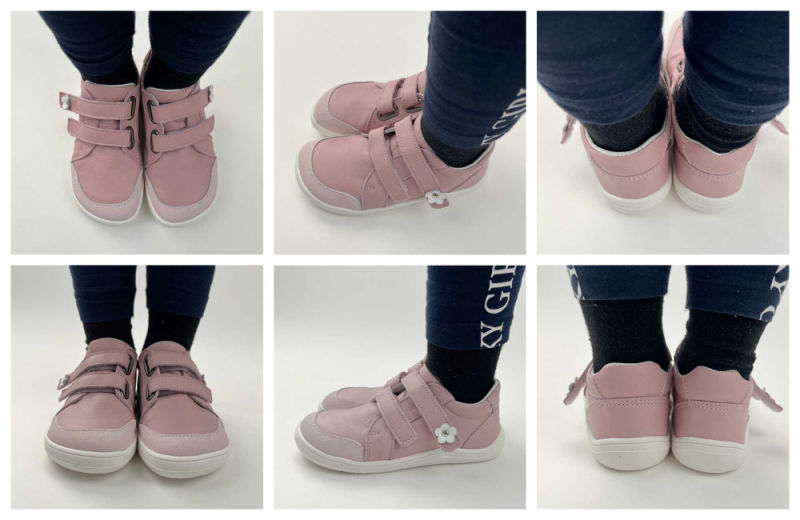
CRAVE
- anatomically shaped toe, ideal for dominant toe
- suitable for feet wide at the toes and not narrow at the heel, suitable for overall wider feet
- can be tightened well around the ankles, but not recommended for significantly narrow ankles
- suitable for the average instep
- flexible sole with non-slip pattern
- sole approx. 3 mm + 1 mm pattern, stitched around the perimeter
- zero drop
- slightly firmer in the heel
- inside leather
- insole not removable
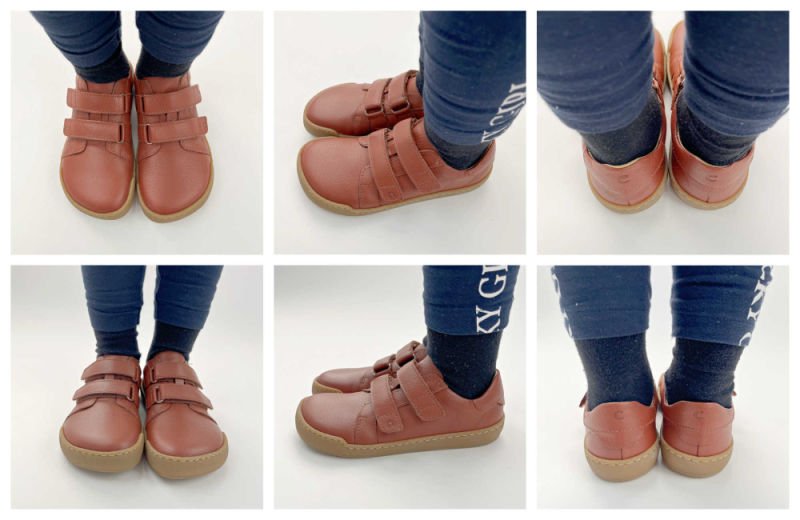
D.D.Step
- anatomically shaped toe, narrower, slightly curved on the toe side, suitable for feet with narrower toes and not for the dominant toe
- suitable for narrow feet with a higher instep
- extra flexible sole with anti-slip pattern, the softest of the compared shoes
- sole approx. 2 mm + 2 mm pattern, stitched around the perimeter
- practical rubber overlap over the toe
- zero drop
- soft in the heel
- very soft shoe with upper material and sole in general (loose enough width in the middle part of the shoe in case of thicker foot in the instep and ankle)
- inside the leather
- insole removable
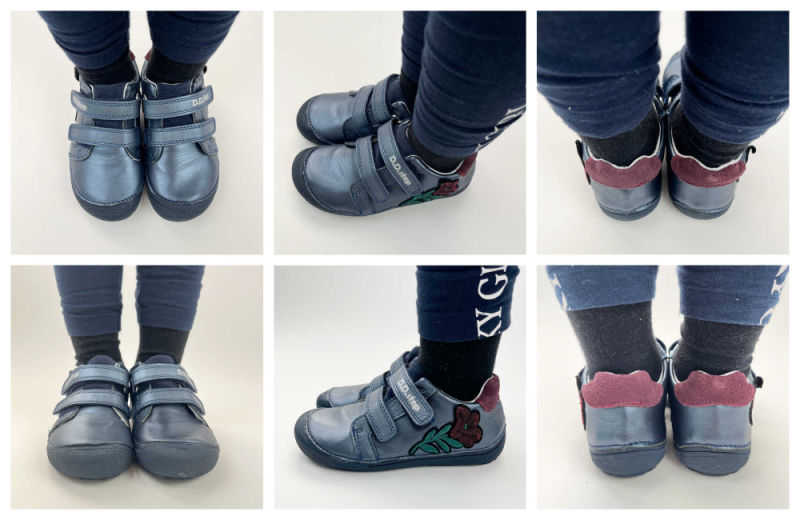
Pegres
- anatomically shaped toe, slightly curled at the toe edge
- suitable for the average foot in the toes, for higher instep and wider heels and ankles
- flexible sole with a soft non-slip pattern
- sole approx. 4 mm + 1 mm pattern, stitched around the perimeter
- zero drop
- slightly reinforced in the heel
- inside leather
- insole removable
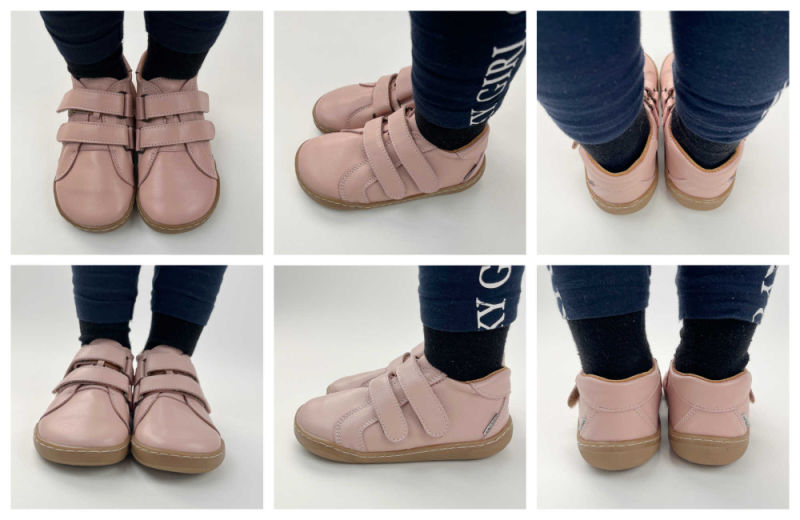
Be Lenka
- anatomically shaped toe, ideal for dominant toe
- suitable for the fin shaped foot, the shoe is wide in the toe and significantly narrowing in the heel
- can be tightened well around the ankles
- suitable for average and lower instep
- flexible sole with non-slip pattern
- sole approx. 4 mm + 1 mm pattern, stitched around the perimeter
- zero drop
- firmer in the heel
- inside fabric
- removable insole
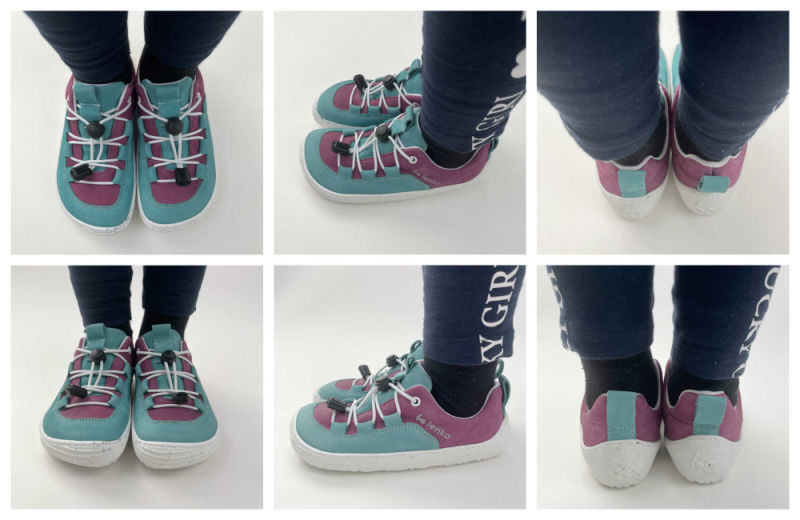
Camper
- anatomically shaped toe, slightly curled at the toe, not ideal for a strongly dominant toe
- suitable for the average foot at the toe, ankle, instep and heel
- the laces are decorative, they can't be tightened much
- flexible sole with a soft non-slip pattern
- sole approx. 4 mm + 1 mm pattern, stitched around the perimeter
- zero drop
- firmer in the heel
- inside leather and textile
- removable insole, it is higher and firmer, we recommend removing it to enhance the barefoot effect
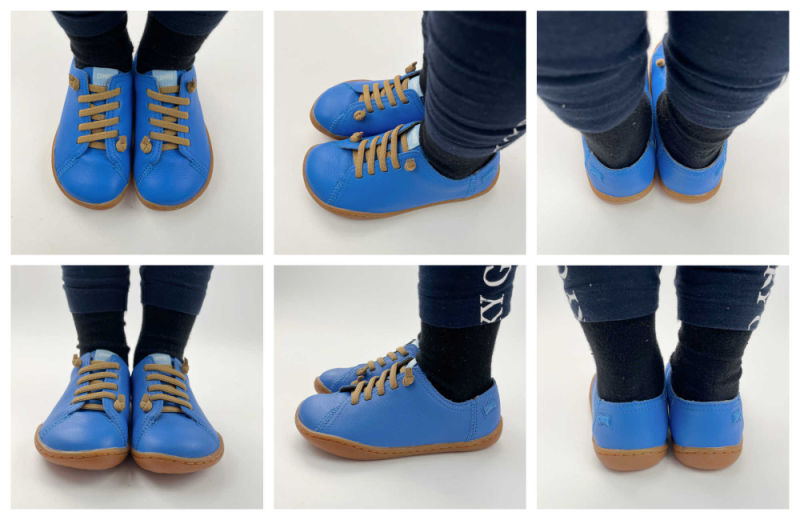
Affenzahn
- anatomically shaped toe, ideal for dominant big toe
- shoes for narrow feet, they are narrower in the toe and heel
- suitable for average and higher instep
- very flexible sole with minimal pattern
- sole approx. 2 mm + 1 mm sample, glued around the perimeter
- zero drop
- soft in the heel
- inside leather
- insole is not removable
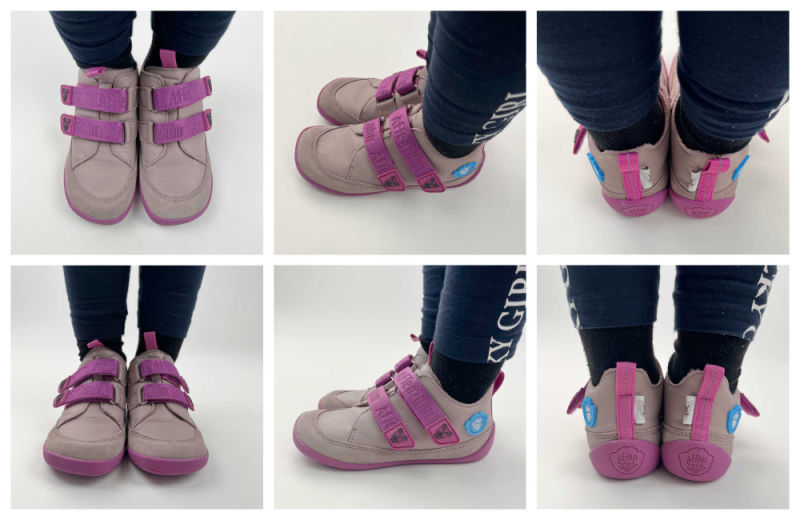
Lurchi
- anatomically shaped toe, ideal for dominant big toe
- suitable for a narrow foot in the toes
- for average and lower instep, average in the ankles, but they can be tightened
- flexible sole with nonslip pattern
- sole approx. 3 mm + 1 mm pattern, stitched around the perimeter
- zero drop
- slightly reinforced in the heel
- inside leather
- removable insole
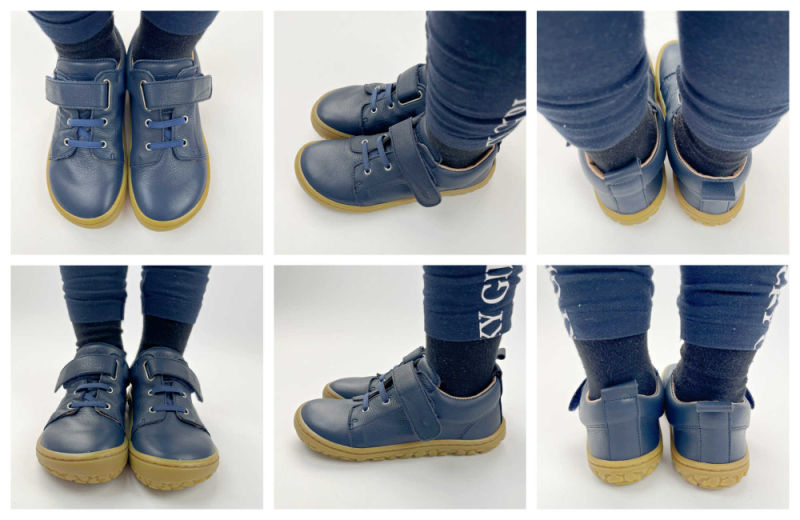
We wish you a pleasant purchase and if you are not sure, do not hesitate to contact us by email, phone, chat or social media and we will be happy to help you.
